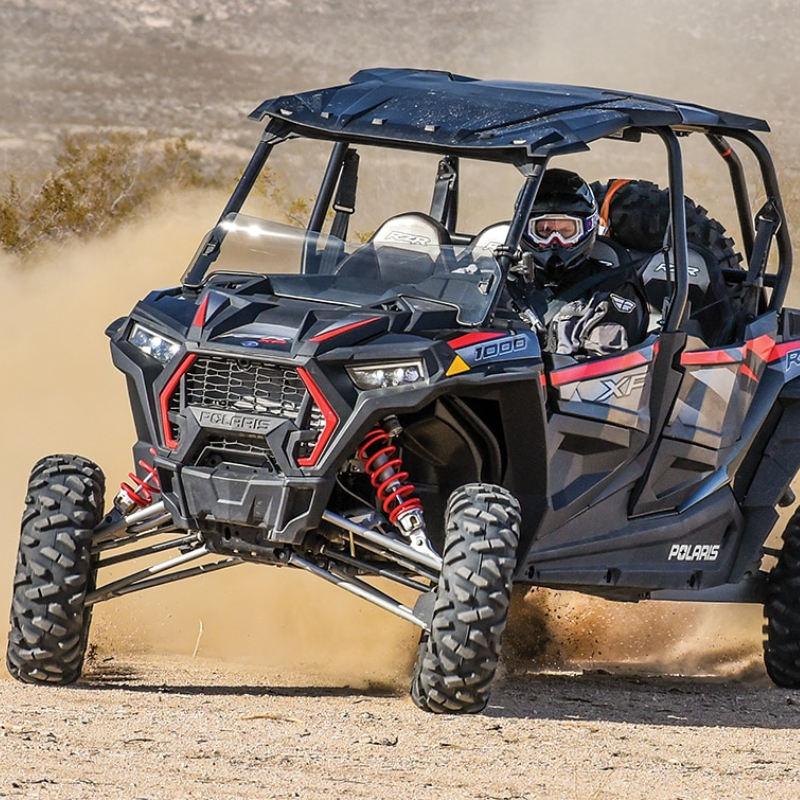Having recently returned home to Saskatoon from Calgary where he was employed as a firefighter, T.J. Nicholson has continued to work hard doing what he’s always done—keeping people safe. Now he’s just doing it in a different way.
Since starting his company Realtime Rescue, Nicholson often works as a subcontractor to larger safety firms providing first aid, CPR, high-angle and confined-space rescue training. He also provides safety training for both industrial and recreational ATV users users, something that’s near and dear to his heart, considering his own love of ATVing.
“There’s a lot of demand right now in industry for ATV safety training,” said Nicholson. “Mostly seismic crews and oil companies who will often travel where there are no roads and rely on their ATV’s to get them there.”
But it’s in the service he can provide to fellow recreational users like himself that Nicholson feels he has the most opportunity to reduce the number of ATV accidents that occur. He has been on the scene of some of those accidents in his firefighting capacity.
“One accident I attended involved a guy who had been at a rally and was intoxicated,” said Nicholson “He rolled his ATV and ended up with a broken jaw, missing teeth and lacerations all over his body. It wasn’t pretty.” What was more, recalled Nicholson, the guy was so out of it he wanted to get back on his ATV and just keep going.
“I use ATV’s recreationally myself,” said Nicholson, “and often I’ll go out riding with big groups of guys to go out and have some laughs, but I would never consider consuming alcohol when I’m I’m riding. It’s just as important with an ATV as it would be with a car to keep alcohol and driving separate, because I’ve seen firsthand what it can do.”
Having ridden for the past 10 years, Nicholson even carries over his belief in safety to the vehicle he rides. He bought a Can-Am Outlander 1000 from Fun Motorsports in Saskatoon not just for the equal parts comfort and power it gives him, but also for the peace of mind.
“The Can-Am has a good reputation for being reliable,” said Nicholson.
Through Realtime Rescue Nicholson offers a one-day ATV safety training course to both industry and recreational users. Nicholson said the course looks atboth the knowledge and the theory behind the safety practices he teaches—something he thinks more ATVers should be aware of, no matter how experienced they think they are.
Familiarity breeds complacency
“In Saskatchewan especially there are many who have grown up with ATVs on the farm or who have used them for work,” said Nicholson. “So a lot of riders have been around them since they were young. But although with many years of riding they’ll have all the basic knowledge of driving in their grasp, the knowledge of why they should ride a certain way isn’t always at the forefront of their minds, mostly because they don’t understand it themselves. Some will just do it instinctively, but some won’t do it all.
“Some people ride their ATVs so much it gets to be second nature,” said Nicholson. “But that also leads to being a little lax on the safety side of things as well. Whether it’s not identifying some hazards in time, starting to get foolish, thinking I’ve done this a million times so this time I can do it faster, or thinking that this time you can get away without wearing a helmet. Those are the times when safety isn’t always adhered to.”
Because of the complacency factor, Nicholson recommends that everyone from kids as young as six to those who consider themselves riding veterans take a safety course and introduce themselves or reacquaint themselves with the knowledge they need to make wise riding decisions. Whether it’s identifying environmental hazards, learning how to execute an evasive move or avoiding the hazards posed by other riders, Nicholson said safety training can “make you aware that there’s more than just you out there when you’re riding.”
Nicholson enjoys teaching and passing on his vast knowledge of safety. And if there’s even a slim a chance that the knowledge he shares can help to prevent even one accident, in Nicholson’s eyes it’s a job well done.
ATV safety rules
Even the most experienced of riders can sometime be lax on safety. But here are some hard and fast safety tips that should always be adhered to:
- Always wear a helmet. Even if it’s just a short trip, you should never attempt to ride an ATV without one. The consequence can be deadly.
- Never mix alcohol and riding. Keep the alcohol at home or ready for the party afterwards.
- Always be on the lookout for environmental hazards, from thin ice to loose embankments, and make the appropriate decisions to recognize them and avoid them.
- Always be aware when riding with a passenger that your ATV will handle differently than when there is just a single rider. Make the appropriate adjustments when cornering, braking or accelerating.








Comments